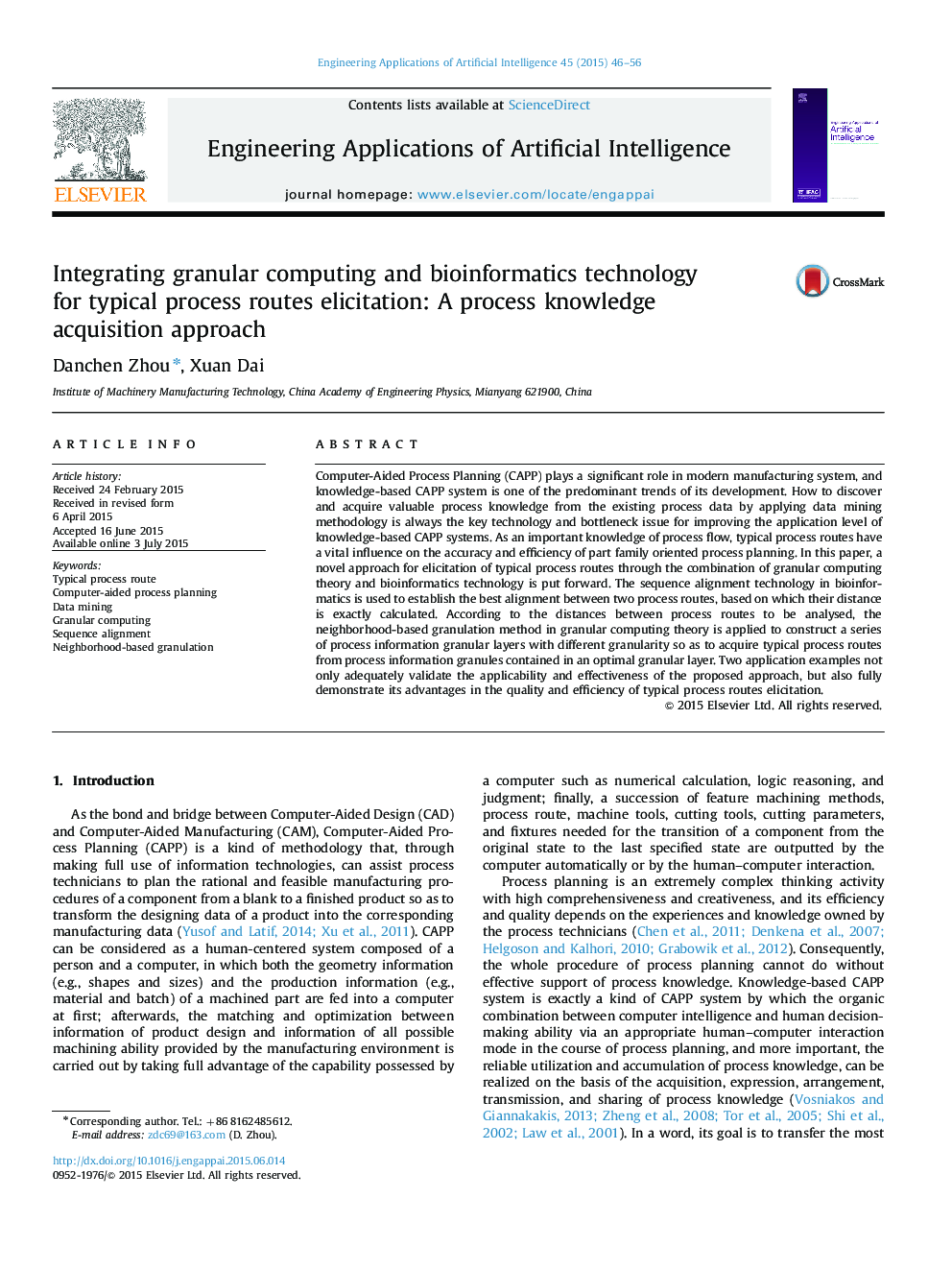| Article ID | Journal | Published Year | Pages | File Type |
|---|---|---|---|---|
| 380365 | Engineering Applications of Artificial Intelligence | 2015 | 11 Pages |
•The proposed method provides a completely new way for process knowledge acquisition.•This approach improves quality and efficiency of typical process routes elicitation.•Process routes alignment is clearer and more intuitive than operation encoding.•A quantitative criterion for selecting a most appropriate granularity is presented.•Diversity of typical process routes can be suited to different levels of part family.
Computer-Aided Process Planning (CAPP) plays a significant role in modern manufacturing system, and knowledge-based CAPP system is one of the predominant trends of its development. How to discover and acquire valuable process knowledge from the existing process data by applying data mining methodology is always the key technology and bottleneck issue for improving the application level of knowledge-based CAPP systems. As an important knowledge of process flow, typical process routes have a vital influence on the accuracy and efficiency of part family oriented process planning. In this paper, a novel approach for elicitation of typical process routes through the combination of granular computing theory and bioinformatics technology is put forward. The sequence alignment technology in bioinformatics is used to establish the best alignment between two process routes, based on which their distance is exactly calculated. According to the distances between process routes to be analysed, the neighborhood-based granulation method in granular computing theory is applied to construct a series of process information granular layers with different granularity so as to acquire typical process routes from process information granules contained in an optimal granular layer. Two application examples not only adequately validate the applicability and effectiveness of the proposed approach, but also fully demonstrate its advantages in the quality and efficiency of typical process routes elicitation.
